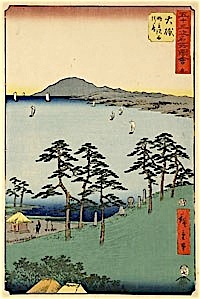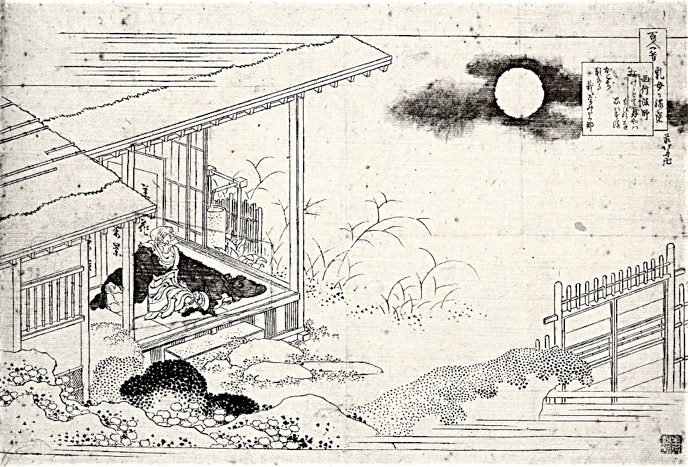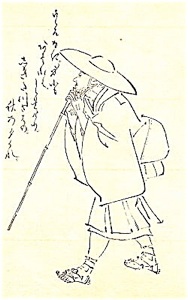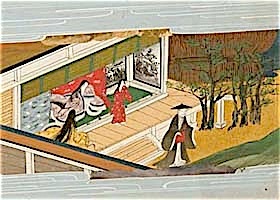西行法師



嘆けとて
月やは物を
思はする
かこち顔なる
わが涙かな
さいぎょうほうし
なげけとて
つきやはものを
おもわする
かこちがうなる
わがなみだかな
The Monk Saigyo
Why then do I
Blame the moon
For this sadness
When it is my troubled face
That is filled with tears?
Saigyo Hoshi (1118 - 1190), became a monk 1140, taking as his religious name Eni; his real name was Sato Norikiyo. Saigyo was the penname he used, it means ‘western journey’, referring to the Buddhist western paradise. The social upheaval in his time could explain his drop-out from his noble family and a military career. He inspired many modern western writers in the hippy culture, like Kerouac and Ginsberg. Travel was life for him. He lived alone for long periods in his life in Saga, Mt Koya, Mt Yoshino, Ise, and many other places, but he is more known for the many long, poetic journeys he took to Northern Honshu. He died in Hirokawa Temple in Kawachi Province (present-day Osaka Prefecture) at age 72. His influence on later poets like Matsuo Basho is unmistakable.
There is an otogi zoshi story (illustrated stories for adults and children alike) about him.
The Sanka Shu is his personal poetry collection. There are 267 of his poems in imperial collections.
The Journey Itself Home: Saigyo’s Way of Impermanence (essay).
The story of Saigyo Hoshi’s Rock.
Saigyo site. It is obvious that Saigyo is still a very popular poet.
Hokusai

Saigyo by Yosai


Norikiyo abandons his family

Saigyo’s hut at Oiso
Hiroshige
Though the theme of this poem is given in headnotes as that of love (tsuki no mae no koi), it is the moon that inspires it (love facing the moon), but it can be seen as related to poem 23. In the latter case the lament would be a general one incited by the sight of the autumn moon. Many illustrations of this poem, including Hokusai’s drawing, show a full moon, making it more an expression of Weltschmerz. I join this minority group.
Hokusai too shows us an old man gazing at the full moon sitting alone on his porch. Behind him is the same unknown poem on a screen as depicted in poem 82.

